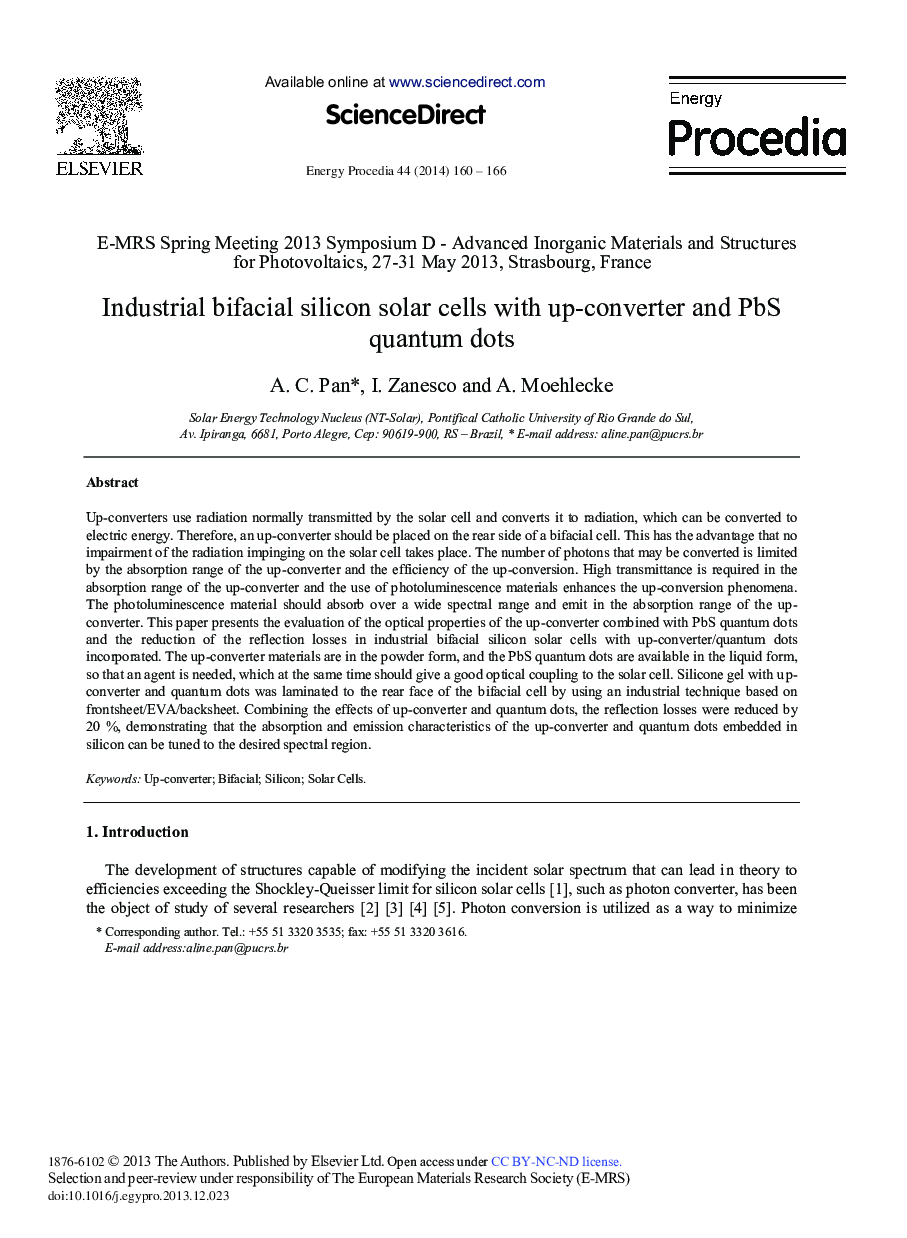| کد مقاله | کد نشریه | سال انتشار | مقاله انگلیسی | نسخه تمام متن |
|---|---|---|---|---|
| 1511930 | 1511191 | 2014 | 7 صفحه PDF | دانلود رایگان |
عنوان انگلیسی مقاله ISI
Industrial Bifacial Silicon Solar Cells with Up-converter and PbS Quantum Dots
دانلود مقاله + سفارش ترجمه
دانلود مقاله ISI انگلیسی
رایگان برای ایرانیان
موضوعات مرتبط
مهندسی و علوم پایه
مهندسی انرژی
انرژی (عمومی)
پیش نمایش صفحه اول مقاله

چکیده انگلیسی
Up-converters use radiation normally transmitted by the solar cell and converts it to radiation, which can be converted to electric energy. Therefore, an up-converter should be placed on the rear side of a bifacial cell. This has the advantage that no impairment of the radiation impinging on the solar cell takes place. The number of photons that may be converted is limited by the absorption range of the up-converter and the efficiency of the up-conversion. High transmittance is required in the absorption range of the up-converter and the use of photoluminescence materials enhances the up-conversion phenomena. The photoluminescence material should absorb over a wide spectral range and emit in the absorption range of the up- converter. This paper presents the evaluation of the optical properties of the up-converter combined with PbS quantum dots and the reduction of the reflection losses in industrial bifacial silicon solar cells with up-converter/quantum dots incorporated. The up-converter materials are in the powder form, and the PbS quantum dots are available in the liquid form, so that an agent is needed, which at the same time should give a good optical coupling to the solar cell. Silicone gel with up- converter and quantum dots was laminated to the rear face of the bifacial cell by using an industrial technique based on frontsheet/EVA/backsheet. Combining the effects of up-converter and quantum dots, the reflection losses were reduced by 20%, demonstrating that the absorption and emission characteristics of the up-converter and quantum dots embedded in silicon can be tuned to the desired spectral region.
ناشر
Database: Elsevier - ScienceDirect (ساینس دایرکت)
Journal: Energy Procedia - Volume 44, 2014, Pages 160-166
Journal: Energy Procedia - Volume 44, 2014, Pages 160-166
نویسندگان
A.C. Pan, I. Zanesco, A. Moehlecke,